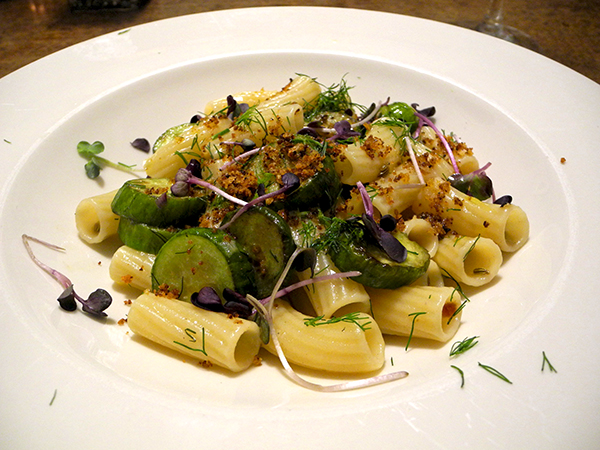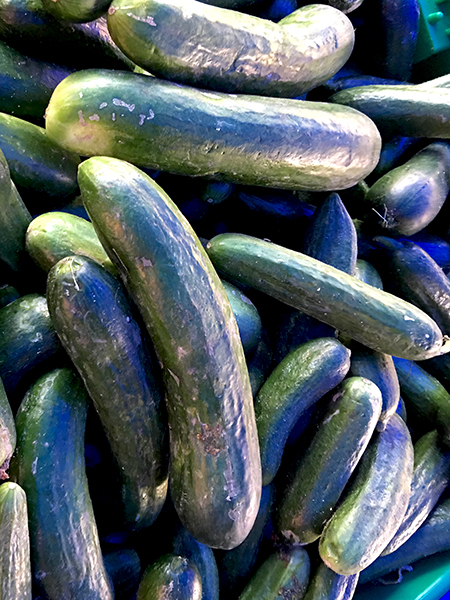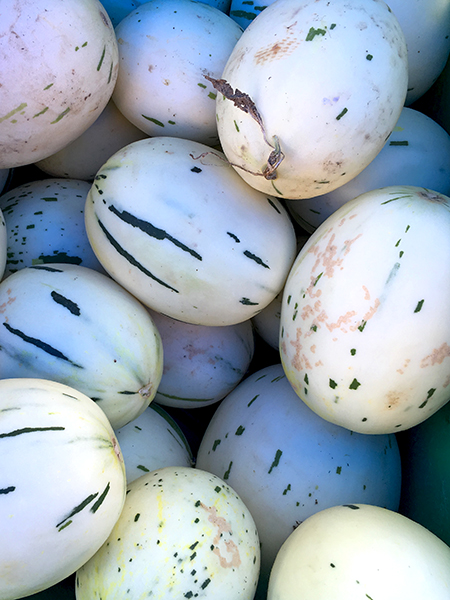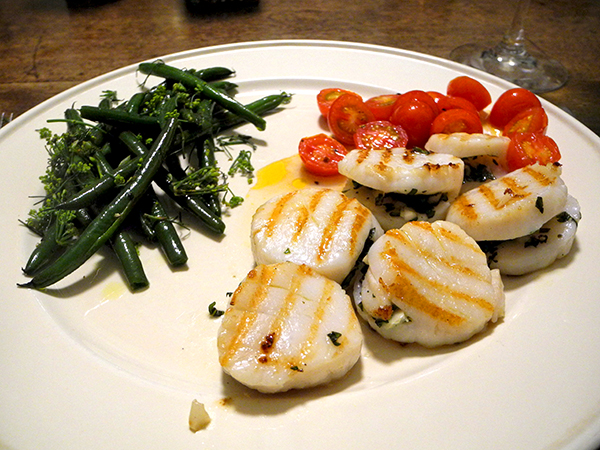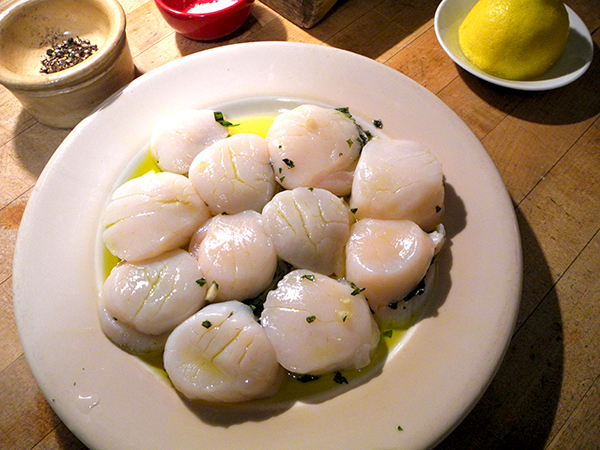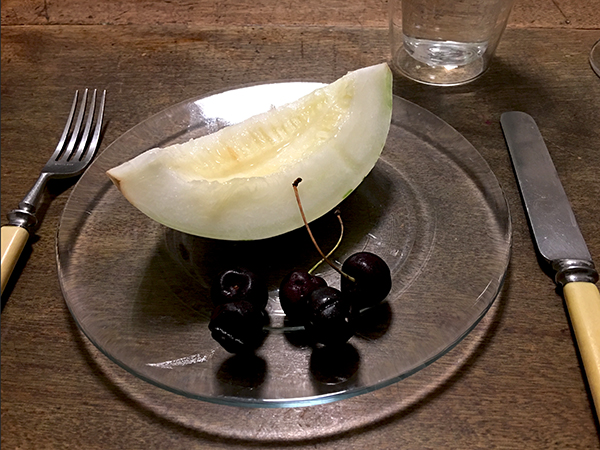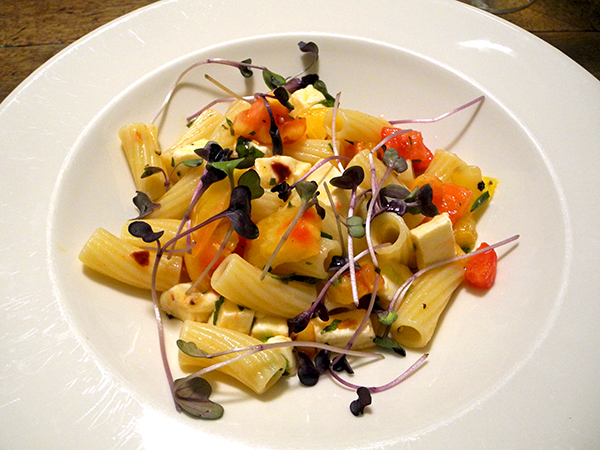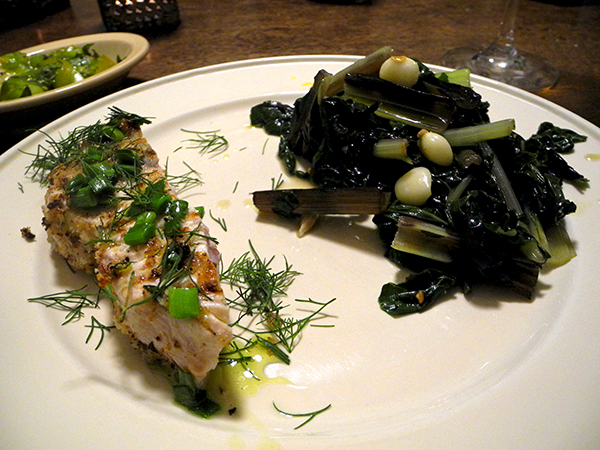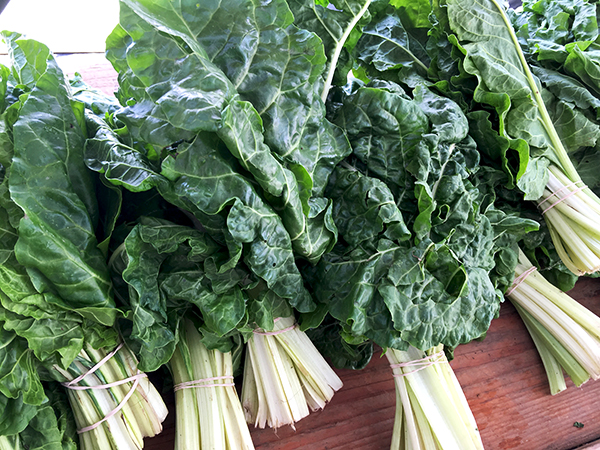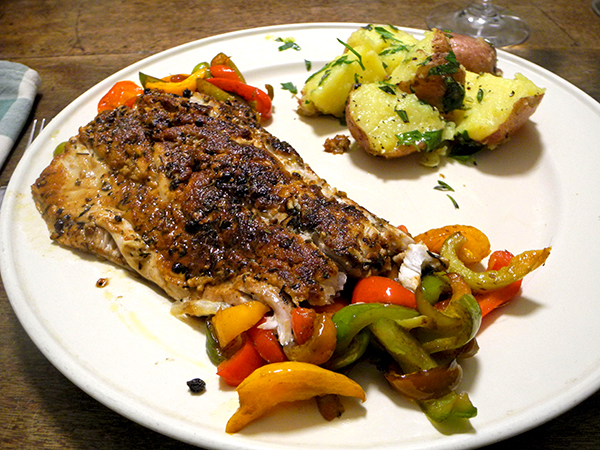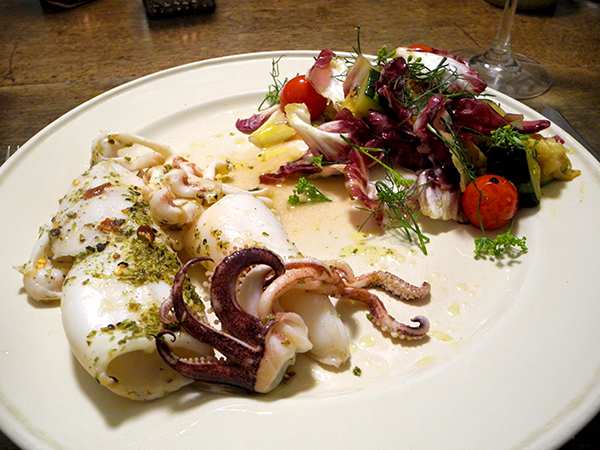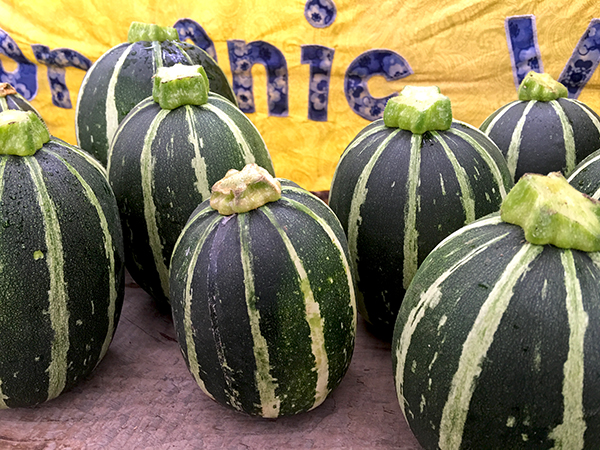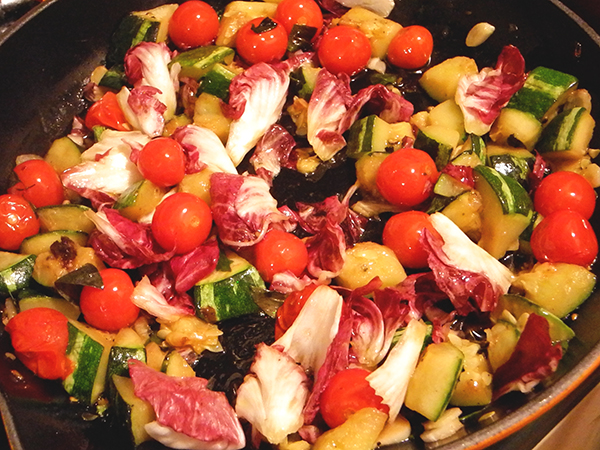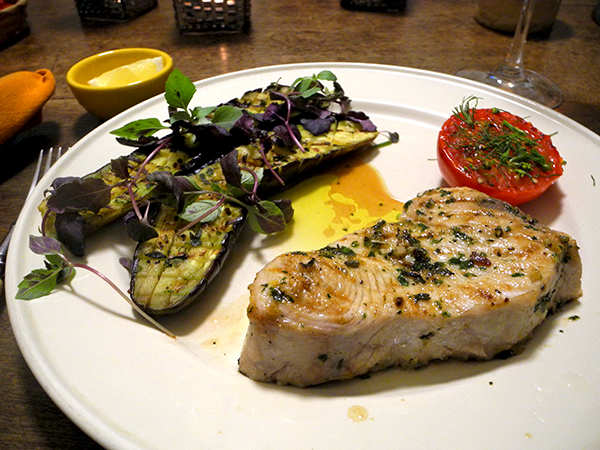
I didn’t buy it because it was shark, but because it looked so incredibly good in the fishmonger’s bucket, 2 weeks in a row. last week I chose triggerfish instead, because it is likely to appear in the market more rarely. This time it was the mako shark’s turn.
I have nothing against sharks; I like them, well, at least in the right environment, one of which I will now avow, is the dinner table.
I neglected to photograph the shark before I cooked it, but think of a swordfish steak, looking especially moist, and, this one at least, the color of a pale rosé wine.
The fish was extraordinarily fresh: At Rick Lofstad‘s Pura Vida Fisheries stall on Friday Lea Mansour showed me this short video, taken the day before, of the shark on the deck of their boat, the Olivia Jane, out of Hampton Bays, Shinnecock, only moments after it was caught. The deck is covered in squid, which appears to be the catch intended that day.
“Do you wanna try and sell this thing?”
The thing was absolutely delicious.
I used a recipe I have occasionally used with swordfish, and it worked beautifully, allowing the slightly sweet, moderately-strong taste of the shark to shine.
The preparation of the other 2 elements of this meal was already pretty familiar territory on this blog. As with the recipe for the fish, there were only slight adjustments in the herbs used this time.
- one 13-ounce (1 1/4-inch thick) mako shark steak from Pura Vida Seafood, rubbed with a mixture of fresh herbs (here lovage and dill from Keith’s Farm; tarragon, rosemary, savory, and sage from Stokes Farm; spearmint from Ryder Farm; parsley from Phillips Farm), all from various Greenmarket farmers) chopped together with sea salt, some freshly-ground black pepper, juicy garlic from Norwich Meadows Farm, and lemon zest, and a bit of olive oil added to moisten the herb mix, most of which was spread onto the surface of the fish before it was pan-grilled, basted throughout the cooking process with some of the reserved rub mixture, removed while still not quite fully cooked in the center, divided onto 2 plates, finished with a squeeze of lemon, a drizzle of olive oil, and served with lemon quarters
- one firm but ripe non-heirloom tomato (I’ve forgotten the proper name) from Down Home Acres, halved, placed face-down on a plate spread with salt and pepper, removed, dried slightly with a section of paper towel, placed on the same grill pan as the shark, halfway through its cooking, turning once, removed, and finished on the plates with a bit of olive oil, a few drops of white balsamic vinegar, sprinkled with dill flowers from Mountain Sweet Berry Farm
- two medium Japanese eggplants from Berried Treasures Farm, split lengthwise, scored with a very sharp knife, brushed with a mixture of oil, finely-chopped garlic from Keith’s Farm, and chopped fresh oregano from Stokes Farm, seasoned with salt and pepper, pan-grilled for a few minutes, turning once, arranged on the plates and sprinkled with micro purple basil from Two Guys from Woodbridge [the basic recipe, absent the topping, is here]
- the wine was an Italian (sicily) rosé, Fuori Strada Off Road Rosato 2015, with Nero d’Avola grapes, from Bottlerocket Wine
There was dessert.
- slices from a Lambkin melon, aka Santa Claus melon, and sometimes known as Christmas melon or piel de sapo
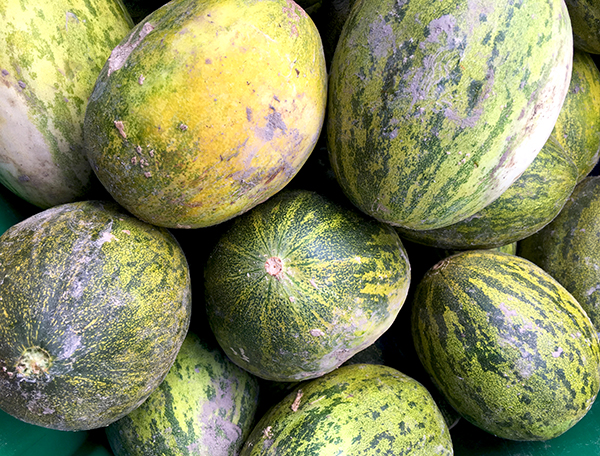
- the music throughout the meal was topical, Vivaldi’s 1740 opera, ‘L’olimpiade’, Rinaldo Alessandrini directing the Concerto Italiano
